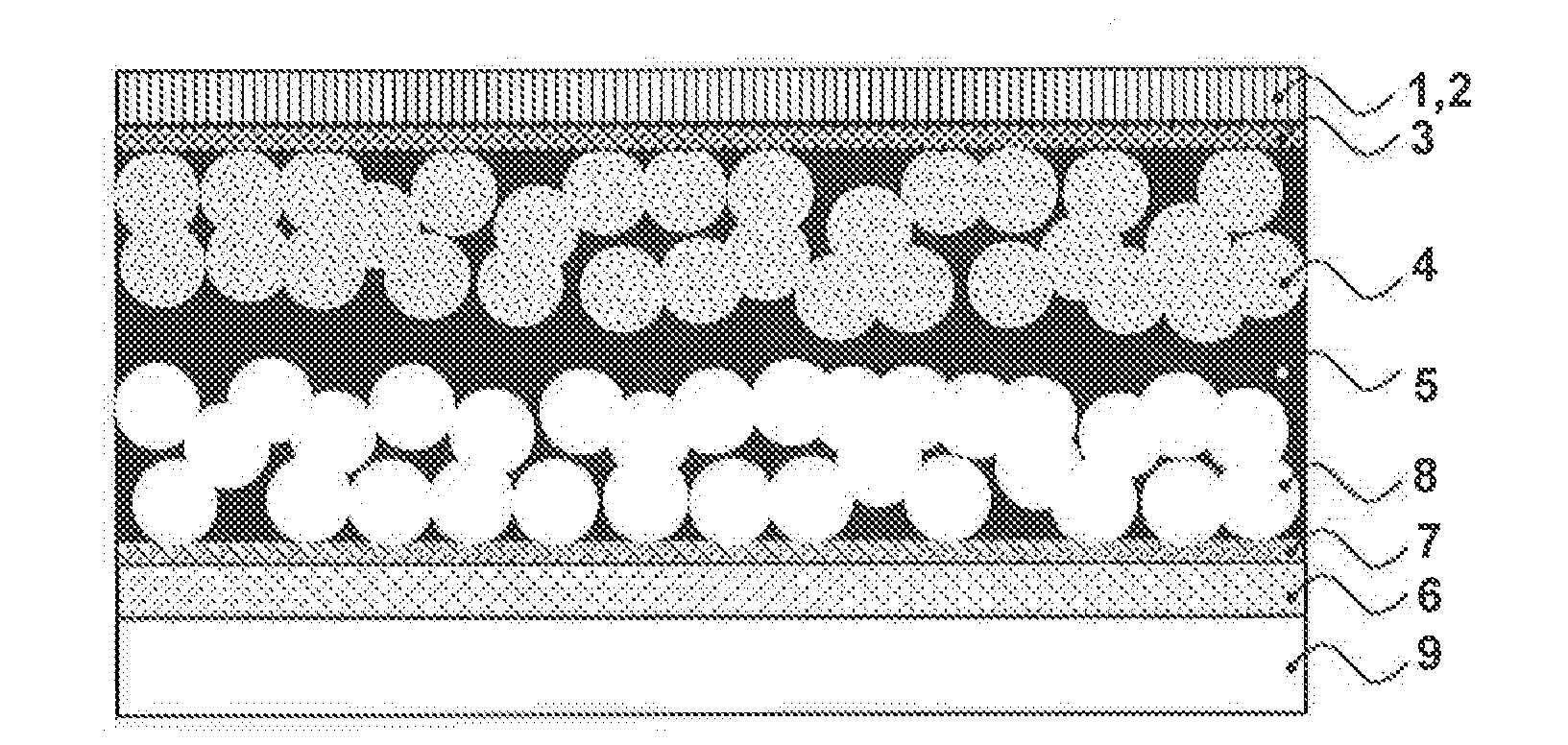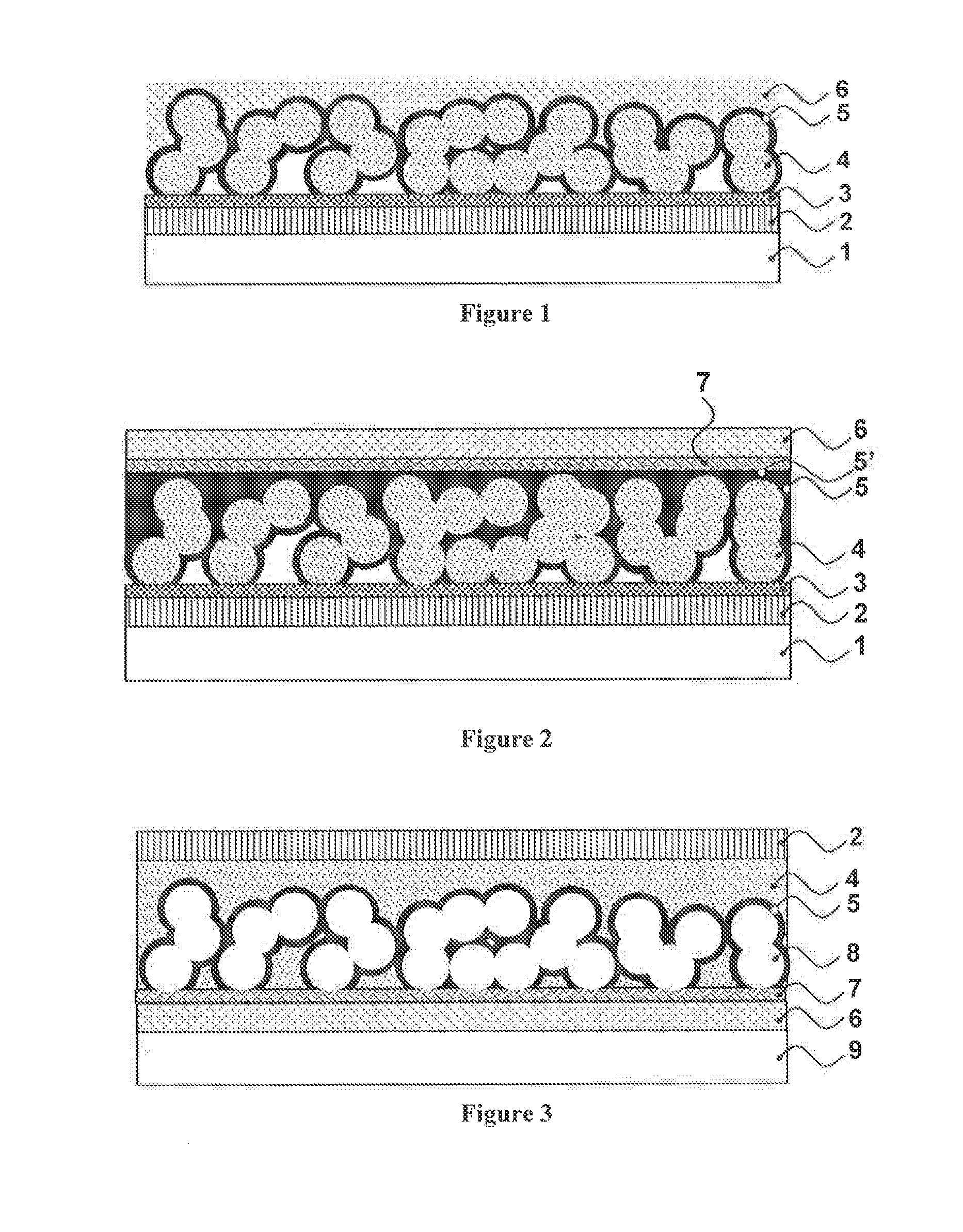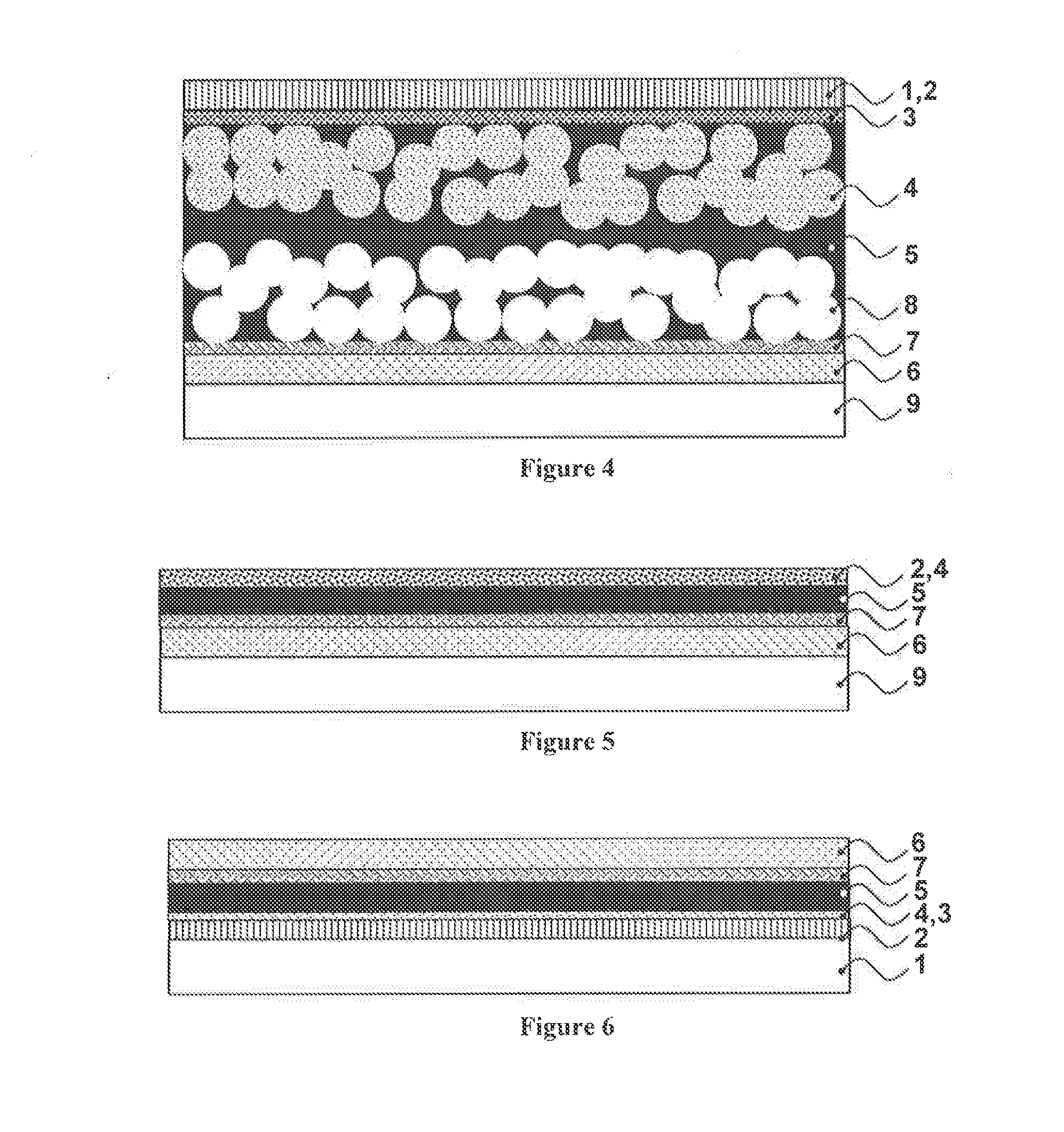Photovoltaic device
a photovoltaic device and photovoltaic technology, applied in the field of photovoltaic devices, can solve the problems of large amount of energy, difficult synthesis and purification of organic hole transport materials, and limited success of dye solar cell devices in the market place, and achieves the effects of high conductivity, high hole mobility of inorganic hole transport materials, and easy production
- Summary
- Abstract
- Description
- Claims
- Application Information
AI Technical Summary
Benefits of technology
Problems solved by technology
Method used
Image
Examples
example 1
[0124]A first batch of Ni(OH)2 paste was made from NiCl2.6H2O and NaOH.Ni(OH)2 was washed with deionised water four times. Pluronic F-127 copolymer was used as a binder in combination with Ni(OH)2 in terpineol in a 4.6:5:13.4 weight ratio to prepare a paste. Thin Ni(OH)2 films were obtained by spin coating. MO was formed after heat treatment at 400° C. for 30 minutes, resulting in transparent films
example 2
[0125]A thin TiO2 hole blocking layer was deposited on FTO / glass by ALD, followed by a thin coating of mesoporous Ties based on diluted Dyesol 18NRT TiO2 paste. CH3NH3PbI3 was then applied to the mesoporous TiO2 layer. Nano NiO, received from Sigma-Aldrich as a black powder. was dispersed into terpineol by mechanically stirring for 1 minute, followed by six passes in a three-roll mill. The ratio of NiO to terpineol was 1:3 wt:wt, NiO slurry was spin coated on top of the TiO2 / pervoskite layer using 2000 rpm for 20 seconds, followed by heating at 110° C., for 15 minutes. A thin layer of gold was deposited onto the NiO layer by vacuum evaporation, which resulted in a device according to configuration 2.
[0126]IV curves recorded immediately after assembly and after 5 days of storage, using a 0.285 cm2 mask during cell testing, are shown in FIG. 7 and key performance parameters are summarised in Table 1.
TABLE 1Cell IDNiOVoc (mV)initial653After 5 days671Jsc (mA / cm2)initial5.73After 5 days6...
example 3
[0127]A thin TiO2 hole blocking layer was deposited on FTO / glass by ALD, followed by a thin coating of mesoporous TiO2 based on diluted Dyesol 18NRT TiO2 paste. CH3NH3PbI3 was then applied to the mesoporous TiO2 layer. Nano NiO, received from Sigma-Aldrich as a black powder, was mixed in a 1:1 molar ratio with spiro-MeOTAD in chlorobenzene. spiro-MeOTAD concentration was 0.06M and 0.2M TBP and 0.03M LiTSFI were added to the mixture, however no cobalt dopant was employed. This slurry was spin coated on top of the TiO2 / pervoskite layer using 4000 rpm for 30 seconds in a dry air glove box. Subsequently, thin layer of gold was deposited onto the NiO / spiro-MeOTAD layer by vacuum evaporation, which resulted in a device according to configuration 3.
[0128]An IV curve, using a 0.159 cm2 mask during cell testing, is shown in FIG. 8 and key performance parameters are summarised in Table 2.
TABLE 2Cell IDNiO / spiro (1:1 mole ratio mixture)Voc (mV)788Jsc (mA / cm2)1.68Efficiency (%)0.75FF0.344
PUM
 Login to View More
Login to View More Abstract
Description
Claims
Application Information
 Login to View More
Login to View More - R&D
- Intellectual Property
- Life Sciences
- Materials
- Tech Scout
- Unparalleled Data Quality
- Higher Quality Content
- 60% Fewer Hallucinations
Browse by: Latest US Patents, China's latest patents, Technical Efficacy Thesaurus, Application Domain, Technology Topic, Popular Technical Reports.
© 2025 PatSnap. All rights reserved.Legal|Privacy policy|Modern Slavery Act Transparency Statement|Sitemap|About US| Contact US: help@patsnap.com



